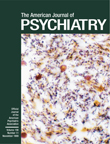Peritraumatic Dissociation and Posttraumatic Stress Disorder Following Motor Vehicle Accidents
Abstract
OBJECTIVE: This study examined the relation between peritraumatic dissociation and posttraumatic stress disorder (PTSD) in victims of motor vehicle accidents. METHOD: Victims of serious motor vehicle accidents (N=122) were assessed for peritraumatic dissociation with the Peritraumatic Dissociative Experiences Questionnaire—Rater Version and followed longitudinally to assess acute and chronic PTSD (1 month and 3 months after the accident) with the Structured Clinical Interview for DSM-III-R. RESULTS: The most common peritraumatic dissociative symptom was time distortion (56.6%). Subjects with peritraumatic dissociation were 4.12 times more likely than those without to have acute PTSD and 4.86 times more likely to develop chronic PTSD. The risk was independent of risk associated with the presence of PTSD before the accident. CONCLUSIONS: Peritraumatic dissociation is common following motor vehicle accidents and is a risk factor for acute and chronic PTSD, independent of risk associated with prior PTSD.



